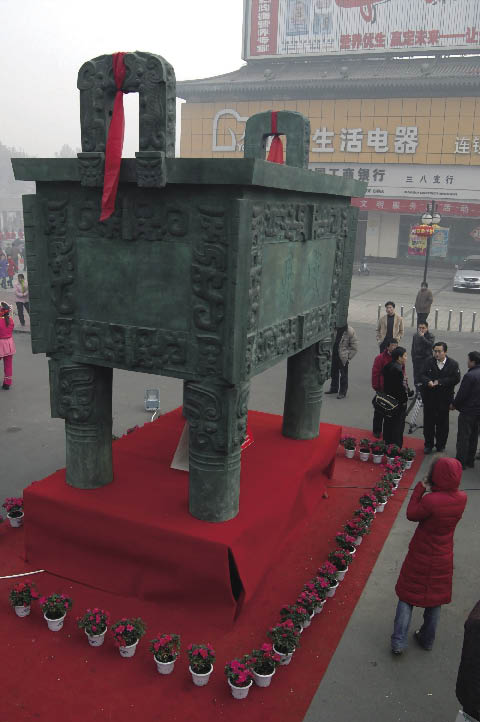| Number One National Treasure Hou Mu Wu Rectangular Ding
By XUE BO
OF over one million cultural relics in the China National Museum (formerly China History Museum) the Hou Mu Wu Rectangular Ding is its most prized. This bronze ding (cooking pot) is a ritual vessel that was used by the royal family in the late Shang Dynasty (17th-11th centuries B.C.), and is the largest and heaviest bronzeware found in the country.
 |
| The replica of the Hou Mu Wu Ding on the site of the Yin Ruins is three times as large as the original. (Source: China Foto Press) |
Located to the east of Tian'anmen Square, the China National Museum has many artifacts that compete for the title of top state treasure. Among these are an assortment of priceless objects: a painted pottery basin with human-mask and fish design which is representative of the Yangshao Culture of the Neolithic Age (10000-2000 B.C.), a jade dragon of the Hongshan Culture unearthed in Inner Mongolia Autonomous Region and one of the earliest known images of a dragon, a bronze jian (basin-like vessel) of the Warring States Period (475-221 B.C.) which is acknowledged as the world's first ice box, and a shroud made of square jade chips sewn with gold thread from the Western Han Dynasty (206 B.C. - A.D. 24) when ancients thought jade could keep a corpse from decaying. However, the star of the museum's collection remains the Hou Mu Wu Rectangular Ding.
The origins of this kind of ding, or cooking vessel, can be traced back to the Neolithic Age. It reached its zenith in the Shang Dynasty, when it was used to worship the Lord of Heaven and the ancestors. The solemnity of the object cannot be exaggerated.
| 